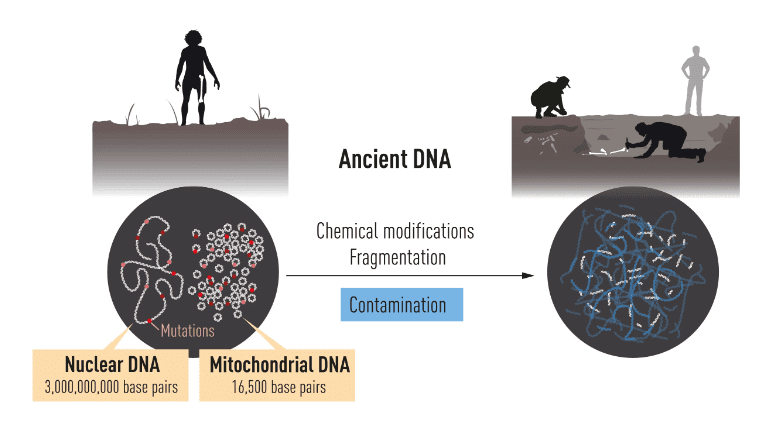Why did a geneticist studying Neanderthal DNA win the 2022 Nobel Prize in Medicine?

The 2022 Nobel Prize for Medicine went to Svante Pääbo. Unlike many former winners of the Nobel Prize in Medicine, Dr. Pääbo never actually invented any specific medicine or class of medicine. Rather the award was given “for his discoveries concerning the genomes of extinct hominins and human evolution”. The press release from the Nobel website provides some insight, but why does research on three types of hominids (modern Homo sapiens [i.e., us], Neanderthals, and Denisovans) deserve a Nobel Prize in Medicine. A story in Quillette explains:
As a graduate immunology student in the early 1980s, the young Swede performed molecular genetic analyses on 23 Egyptian mummies, one of which—a 2,400-year-old child specimen—proved to contain clonable DNA. The discovery yielded the first scientific paper ever published on the subject of DNA extracted from fossil tissues.
The then-available technology didn’t allow Pääbo to sequence the mummy’s entire genome, nor those of the Neanderthal specimens he would later study. And it wouldn’t be until 2014—following two decades of research—that Pääbo and his team at the Max Planck Institute for Evolutionary Anthropology deciphered a Neanderthal genome to such extent that it could be systematically compared to its modern human equivalent. In the process, they pioneered laboratory and computational solutions to a basic problem of paleontology: During the passage of tens of thousands of years, the DNA contained in bones typically dissolves into tiny fragments. Any scientist seeking to reconstruct an ancient genome must not only patch it together from countless isolated bits and pieces, but also apply analytical methods to filter out contaminating DNA from millennia worth of bone-colonizing fungus and microorganisms.
Before Pääbo demonstrated otherwise, some scientists believed that Neanderthals might have been our own ancestors. However, Pääbo determined that Neanderthals and modern humans developed in parallel—the former in Europe and Asia, the latter in Africa—with their latest common ancestor living about 800,000 years ago.
While the technical achievement here is impressive, perhaps the biggest insight was the discovery of a new group of early hominins known as Denisovans. The discovery of the Denisovans are described below in a 2010 article in Nature:
It represents a hitherto unknown type of hominin mtDNA that shares a common ancestor with anatomically modern human and Neanderthal mtDNAs about 1.0 million years ago. This indicates that it derives from a hominin migration out of Africa distinct from that of the ancestors of Neanderthals and of modern humans. The stratigraphy of the cave where the bone was found suggests that the Denisova hominin lived close in time and space with Neanderthals as well as with modern humans.
While Neanderthal DNA comprises up to 4% of modern human DNA in parts of Europe and Asia, Denisovan DNA is thought to comprise up to 6% of modern human DNA in pats of Papua New Guinea and Melanesia.
Thus, if we want to understand modern day human DNA, Dr. Pääbo’s discoveries regarding hominin DNA may be vital.








